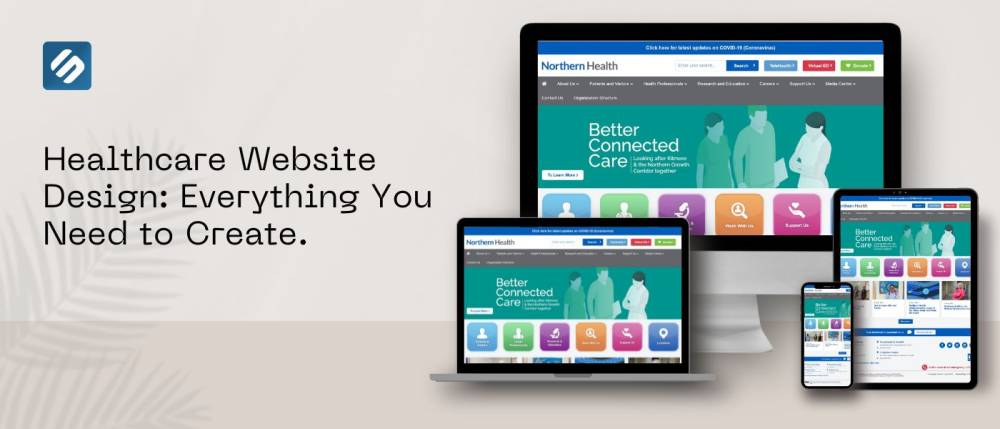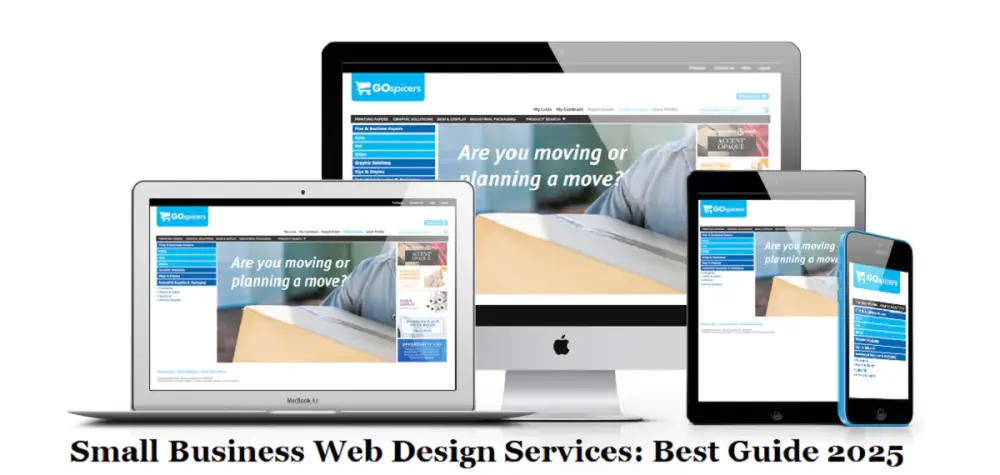Healthcare website design is becoming increasingly important for healthcare organizations. As the healthcare industry continues to transition from traditional paper-based systems to digital ones, consumers expect websites to be easy to use and provide quick and simple access to medical advice and information.
Designing a healthcare website that not only looks good but also provides users with a secure, efficient, and user-friendly experience is critical. From making sure pages load quickly to being mindful of compliance regulations and ensuring the site is SEO-optimized, healthcare website design requires a lot of thought and attention to detail.
With the right design, healthcare organizations can create an exceptional user experience that will have a positive impact on their brand. Healthcare website design is the practice of utilizing technology and design principles to create websites that are tailored to the healthcare industry.
This type of design is tailored towards the optimal user experience, ensuring that visitors, patients, and healthcare professionals alike are all able to quickly and intuitively interact with the website.
Healthcare website design also focuses on security and other industry-specific needs, keeping the website both relevant and secure. This combination of design, technology, and security ensures a user-friendly and secure healthcare website.
What is Healthcare Website Design?
Health care website design is the process of creating a website for a hospital, clinic, doctor, or other medical practice. Hospital websites can help to build trust with new patients, as well as provide information and services to existing ones. In addition to providing content about the practice and its offerings, these websites can also include features such as appointment setting, online bill pay, medical record review and more.
When designing a healthcare website, it’s important to take into account the special needs and requirements of a medical organization. Content should be designed with patient education in mind and be easy for a medical consumer to understand.
By leveraging modern web technologies, healthcare website design can create an online experience that is user friendly, secure, visually appealing, and optimized for the best user engagement. In addition, a healthcare website should be designed with SEO (Search Engine Optimization) in mind to ensure that potential patients can find the website easily.
With an effective healthcare website design, healthcare providers can present their services and offerings in a way that is easily accessible for customers or patients. Healthcare websites should be intuitive to use and include features such as easy navigation, secure login, and personalized content.
Additionally, a healthcare website design should focus on patient engagement through features such as online scheduling and interactive resources. By creating engaging and intuitive web experiences, healthcare providers can improve patient engagement and reduce wait times.
Healthcare website design should also incorporate methods for the collection and use of data. With a strong data-driven design, healthcare providers can gain insights into their customer behavior and provide a personalized experience for their patients.
By implementing analytics tools, healthcare providers can track user behavior and provide targeted content to individual customers. Healthcare website design should also focus on ensuring security, complying with HIPAA regulations, and implementing data privacy protection features.
Overall, healthcare website design is an important part of building an effective digital presence for healthcare providers. By creating user-friendly and secure designs, healthcare providers can improve patient engagement and provide a better healthcare experience.
Advantages of Having an Optimal Healthcare Website Design
Having an optimal healthcare website design is essential for any healthcare provider. By staying on top of the latest trends in website design, healthcare providers can better serve their patients, increase their reach, and improve overall brand awareness.
Here are some of the top advantages of having an optimal healthcare website design:
Improved Healthcare Quality
With an optimal website design, healthcare providers can efficiently communicate valuable medical information to their patients. Clear navigation helps patients find the most relevant and useful information quickly and easily, allowing them to make better informed decisions about their health.
Improved Patient Experiences
With a well-designed website, healthcare providers can create a positive and enjoyable patient experience. Smooth transitions and intuitive navigation result in fewer patient-provider conflicts and better engagement with patients.
Increased Reach and Engagement
Healthcare providers who take the time to optimize their website design can reach a much wider audience online. With effective SEO tactics, providers can ensure their website ranks high on major search engines, increasing visibility and attracting potential patients.
Increased Brand Awareness
Oftentimes, patients’ first impression of a healthcare provider is through their website. An effective website design encourages patients to learn more about a provider’s services and offerings, creating a positive impression and building brand recognition.
Overall, having an optimal healthcare website design is key for any healthcare provider. By investing in a well-designed website, healthcare providers can enjoy a host of benefits, including improved healthcare quality, increased patient experiences, increased reach and engagement, and increased brand awareness.
Essential Components for an Effective Healthcare Website Design
Healthcare website design is essential for medical and healthcare organizations to provide even better service to their patients. To build an effective healthcare website, there are several components that should be taken into consideration.
Designing an effective healthcare website can be a challenging task due to the large amount of information involved. Designers must incorporate various components and features into their website design in order to create a successful healthcare website.
Here are the essential components to consider when designing an effective healthcare website:
Target Audience Research
Target Audience Research is a critical factor in healthcare website design to ensure that the website meets the needs and expectations of the visitors. Knowing who your target audience is and what they are looking for is essential in designing an effective website.
By researching your target audience and gathering insights, you can design an efficient healthcare website that best meets their needs and appeals to their interests.
Content Strategy
An effective website design should include a content strategy to ensure all the relevant information is organized in an easily accessible manner. By developing an appropriate content strategy, you can ensure that users can quickly find what they are looking for and clearly understand the content.
Content should be easy-to-understand, informative and consistent with the organization’s goals and values.
Engaging User Interface Design
Designing an engaging user interface is essential in creating a successful healthcare website. It should be easy to navigate and visually pleasing allowing users to quickly access what they need.
The website should be designed considering the preferences and habits of the visitors. The design should be in line with the brand image of the organization and should convey the message that it wants to deliver.
Clean and Responsive Layout
Having a clean and responsive layout is key for patient engagement with your healthcare website. It is important to ensure that the website can be navigated quickly and easily. The layout should be optimized for all the devices and should be responsive enough to provide a seamless navigation process.
Easy Access to Resources
Healthcare websites should also provide easy access to key resources such as health insurance, physician databases, patient support groups, and more. This will help patients easily find the information they need.
Having concise and organized sections which direct the visitors to the resources they require is helpful. Moreover, providing organic links to related resources or external sources will aid in improving the experience of the users.
Patient Communication
Patient Communication is an integral part of healthcare website design. Utilizing the latest technology and creating a secure communication portal between patients and healthcare providers can be the foundation of a successful healthcare website.
Making sure that the website has a secure messaging system is crucial. With features like appointment booking, secure information exchange, and patient feedback, the users would be able to easily reach out and interact with the organization.
Call to Action Services
Call to Action Services is an important part of an effective healthcare website design. Creating a call to action service on your healthcare website can be a great way to engage users and encourage patients to use your services. This could include anything from appointment reminders to follow-up emails.
By adding special features and promoting offers, the organization would be able to increase its engagement and to boost its market reach.
In short, combining all the components such as Target Audience Research, Content Strategy, Engaging User Interface Design, Clean and Responsive Layout, Easy Access to Resources, Patient Communication, and Call to Action Services is essential in effective healthcare website design.
It is important to ensure that the website meets the needs and expectations of the patients and healthcare professionals for it to be successful.
Ways to Improve Healthcare Website Design
Optimizing a healthcare website for search engine visibility (SEO) is key to a successful digital strategy. That’s why having a well-designed website has become such an essential part of any healthcare provider’s modern marketing efforts. Healthcare website design and development have come a long way in recent years, and there are several steps providers can take to ensure their website provides the best user experience.
Secured and Accessible Platforms
Providers must ensure that their website is up-to-date and secure. To maintain HIPAA compliance, providers must use secure server encryption and ensure all information is transmitted securely and private data remains confidential. Providers must also ensure that their website is accessible. Many users are unable to access websites with outdated designs, frameworks, or navigation.
Functional Usability
Healthcare websites must also prioritize convenient and intuitive usability. Visitors should be able to easily access the information, techniques, and tools they need without difficulty. A healthcare website should have a simple, easy-to-navigate layout, and the text should be easily readable with clear titles.
Mobile Compatibility
Optimizing a healthcare website for mobile devices is key, as more web users use the internet on their smartphones than on any other device. Mobile compatibility is a must, as many patients and potential patients are increasingly looking for health-related information and services on their phones. Providers should make sure the mobile version of their website is accessible and easy to navigate from any device.
Modernization and Improvement
Modernizing a healthcare website should be done regularly to maintain high levels of engagement and performance. Regular reviews of website analytics and data can help providers identify ways to make improvements and increase conversions. Improvements should also include additions and updates to web page content to make sure visitors are engaged and receiving up-to-date information.
Healthcare providers must stay on top of website design and development trends to ensure their website is optimized for the best user experience and enhanced SEO performance. Utilizing the steps outlined above, providers can create a healthcare website that is not only informative, but also intuitive, secure, and engaging.
Challenges in Healthcare Website Design
Developing a website for a healthcare organization presents many challenges, from increased security to meeting patients’ needs. Due to the sensitive nature of the information held, there must be a strong focus on security in healthcare website design. In addition, websites must have logical navigation that patients easily understand.
Technology scalability is also important, as websites must accommodate a myriad of devices. Finally, healthcare organizations must comply with state and federal regulations to maintain operations, so websites must be updated as these regulations and compliance requirements change.
Increased Security
Healthcare website design must adhere to strict industry standards when it comes to privacy and security. It should include top-of-the-line encryption to protect patient data, ensure secure communication, and prevent malicious access. Furthermore, there must be the ability to track user behavior and audit logs to detect any unauthorized activities.
Meeting Patients Needs
When constructing the user interface, website developers must design the site to answer the patient's needs. Healthcare-specific features, such as appointment scheduling, medical records management, doctor ratings, and interactive health information should be provided. The website must also provide access to customer support in the event that any questions or concerns arise.
Technology Scalability
In the modern world, people use an array of devices to access websites, such as tablets, smartphones, PCs, watches, and browsers. To accommodate all these devices, the healthcare website must be designed to be responsive to any device. It must also be able to handle a large amount of data, while simultaneously offering quick loading speeds.
Adapting to Regulations and Compliance Requirements
Healthcare website design must also accommodate changing government regulations. Thus, the website should be regularly monitored for any updates or new laws that must be incorporated into the design accordingly. There must also be an internal audit system to ensure compliance with laws and regulations.
Creating an effective website for a healthcare organization is intricate and requires knowledge of the sector and the challenges that come with it. The website must have a focus on security, meet patients' needs, and be adaptable to the changing healthcare regulations. With the right plan and forethought, a healthcare organization can have an effective and user friendly website.
What to Look for in a Healthcare Website Design Company
When looking for a healthcare website design company, there are many factors to consider prior to hiring. In order to build a successful website, a healthcare website design company must have expertise in the field. An effective design agency should be familiar with the different design trends, strategies, and technologies that are prevalent in the healthcare industry. In addition, they must possess a strong understanding of health regulations to ensure the website complies with all applicable rules and regulations.
When considering any healthcare website design agency, look for a company that offers the expertise, dedication, and support you need to create an effective and engaging website. With the right design team, you can be sure that your healthcare website has the right tools to succeed in the online world.
When you own a healthcare business, it is essential to make sure you find the right healthcare website design company that can offer the services you need. Finding a company that specializes in your field of healthcare is essential to ensure success with your new website.
Here is a list of seven key elements to look for when selecting a healthcare website design company:
-
First and foremost, look for a company that has experience and expertise in the industry. A reliable healthcare website design company should take the time and effort to be knowledgeable in the specific healthcare marketplace. They should have experienced web designers and developers who understand the particular needs of a healthcare business.
-
Second, make sure the company has a strong understanding of all healthcare regulations and laws. It is important that the website ensures compliance with the relevant laws and regulations at all times. This includes data security and privacy regulations.
-
Third, look for a healthcare website design firm that is committed to results and customer satisfaction. You should expect high quality work that produces results. The website should be designed to meet the needs of new and existing patients, and increase visits and conversions.
-
Fourth, expect the website to be designed with the highest possible standard of quality. Quality design should be employed such as providing engaging visuals, easy navigation, and fast loading times to improve the user experience.
-
Fifth, look for a web design company that emphasizes security. Most users of healthcare websites expect a high level of security and data privacy. The website should also follow the highest security protocols and encryption standards to maintain personal data safely.
-
Sixth, make sure that the company is willing to work within your budget. Many medical website design companies provide various packages that are tailored to fit your needs while still remaining within your budget.
-
Seventh, When it comes to quality design, there are a few areas of emphasis. From compelling visuals that entice viewers to stay on the site, to a user-friendly design that visitors can navigate quickly, it’s essential to partner with somebody who can create an aesthetically-pleasing interface that’s both accessible and welcoming.
Finally, look for a web design firm that offers a supportive customer service team. Reliable customer service is essential for maintaining an up-to-date website. You should expect the design team to respond quickly to any questions or requests you may have in a timely and professional way.
When considering a healthcare website design company, make sure to look for these seven key elements. This will ensure that your newly designed website meets the needs of patients, meets regulations, and earns conversions.
Final Thoughts
There is no denying that the healthcare industry is vast, complex and rapidly growing. With the rise of mobile technology, the demand for healthcare website designs is growing as well. Healthcare website design is an important step in modernizing and streamlining medical service.
By utilizing the right combination of aesthetics, functionality and content, a well-designed healthcare website can effectively engage patients, clients and stakeholders. It can also become a crucial resource for those seeking information about health-related topics.
When it comes to healthcare website design, aesthetics can make or break the success of the site. It should be aesthetically appealing and easy to navigate so users can quickly find the information they need. Additionally, functionality is key.
All features and links should function properly and quickly so users can quickly get the information they need without having to look around too much. Lastly, content is key. Quality content will keep users engaged and give them the necessary information to make decisions and take action.
The main goal of a healthcare website design is to improve patient experience. Visitors expected to access adequate information such as contact information, forms, and helping materials quickly and easily.
A well-designed hospital website should prioritize patient needs by providing accurate and organized information, as well moving guests quickly and easily from page to page. Furthermore, utmost compliance standards must be met in healthcare website design so that patient privacy and data protection can be assured.
In addition, the modern look of a website should reflect the professionalism and commitment of the medical institution. Beauty is not only skin deep. By investing the time and resources into designing a website with intuitive navigation, medical services will come off as efficient and reliable to the target audience.
Get Our Service
Healthcare website design is a complex project that requires detailed thought and careful orchestration. It is important to include all stakeholders, such as medical staff, hospital management, and patient groups, to get input on how the website should look and function. Furthermore, the website should be tested regularly to ensure it meets compliance standards.
With our experience in healthcare website design and our commitment to providing quality services, you can feel confident in enlisting our services. We can help you craft a website that prioritizes patient needs, meets compliance standards, and looks modern and user-friendly. Contact us today to get started.
Frequently Asked Questions for Healthcare Website Design
Healthcare website design is one of the most important aspects of running a successful medical practice. From helping to increase patient engagement to increasing awareness of the medical services you have to offer, healthcare website design plays a crucial role in a successful online presence. To help you make sure you are getting the most from your website, here are some frequently asked questions about healthcare website design.
1. What Should I Consider When Designing a Healthcare Website?
When you are designing a healthcare website, there are several important elements to consider. First, you must make sure that the website meets the legal requirements for medical practices. You should also ensure that your website is easily navigable and that it is optimized for mobile devices. Lastly, you should also consider patient reviews, responsive design, search engine optimization, and user experience.
2. How Do I Ensure My Website is Optimized for Search Engine Results?
The key to ensuring that your website is optimized for search engine results is to make sure it is filled with quality content. Utilize relevant keywords and create content that is useful to your target audience. You should also include internal links, backlinks, and images to help boost your website’s performance on search engine results.
3. How Do I Make My Healthcare Website More Interactive?
Making your healthcare website more interactive is an important step in engaging potential patients. Include features such as interactive chat bots, blogs, surveys, and webinars. This will make it easier for patients to interact with you and your practice, and will help to build confidence in the quality of care you offer.
4. What is Responsive Design?
Responsive design is a type of website design that is optimized for both desktop and mobile devices. It adjusts the layout of your website based on the device the user is viewing it on, providing an optimal viewing experience for whatever device they are using. Ensuring that your website has a responsive design will allow you to reach more people and maximize your patient engagement.
With these questions, you must now have a better understanding of healthcare website design and how to optimize it for your medical practice. Implementing the right design elements, optimizing for search engine results, and making your website interactive are all key factors to creating an effective website that will help improve patient engagement and serve your practice well.




